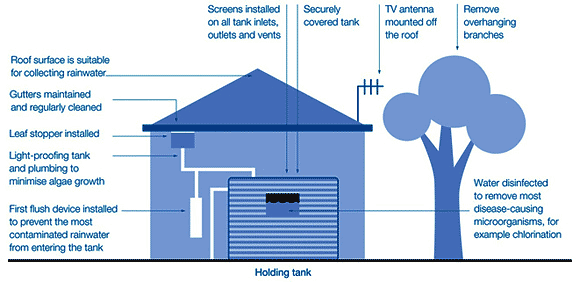Rainwater tanks can reduce the harm to our waterways caused by too much stormwater. Tank water can be used to flush toilets, wash clothes, water gardens and wash cars, significantly reducing demand on drinking water.
How rainwater tanks work
Rainwater tanks collect stormwater run-off from impervious surfaces such as roofs, reducing the amount that enters our waterways. They are fitted with an overflow mechanism, meaning that once a tank is full the excess water is redirected into the stormwater drainage system.
Rainwater tanks that are only used for watering gardens are much less efficient than tanks used for flushing toilets.
Advantages and limitations
Advantages of rainwater tanks are that they:
-
minimise water usage when used in the toilet, laundry or garden
-
reduce strain on the stormwater drainage system
-
retain water close to source
-
reduce site run-off and flood peaks
Limitations of rainwater tanks are that they only provide benefits when the tank water is used frequently, creating space to capture more water each time it rains.
Tips and advice
You can maximise the amount of water your rainwater tank captures by properly designing your roof, downpipes and tank location.
Try to connect as much of the roof area to the rainwater tank. A slow irrigation dripper line to a suitable garden area can ensure your tank can always capture water.
Design and maintenance tips for rainwater tanks - Victorian Department of Health

For more information on rainwater tanks, refer to Chapter 12 'Rainwater tanks' in the WSUD Engineering Procedures available for purchase from CSIRO Publishing.
WSUD Engineering Procedures - CSIRO Publishing